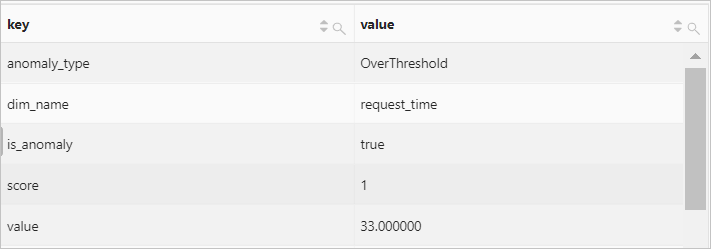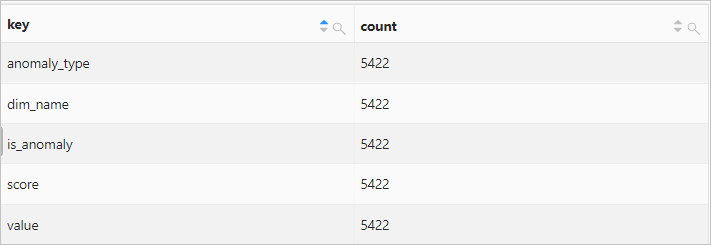In complex business scenarios, the value of a log field may be of a complex data type, such as array or map. If you want to query and analyze logs that contain fields whose values are of the preceding types, you can use an UNNEST clause to expand the field values into multiple rows for analysis.
Syntax
- Expand an array into multiple rows. column_name specifies the column name of the rows.
UNNEST(x) AS table_alias(column_name) - Expands a map into multiple rows. key_name specifies the column name of the keys and value_name specifies the column name of the values.
unnest(y) AS table(key_name,value_name)
try_cast(json_parse(array_column) as array(bigint)) syntax to convert the JSON data to an array or a map. For more information, see Data type conversion functions. Parameters
| Parameter | Description |
| Parameter | Description |
| x | The value of this parameter is an array. |
| column_name | The column name that you specify for the data expanded from the array. This column is used to store the elements in the array. |
| y | The value of this parameter is a map. |
| key_name | The column name that you specify for the data expanded from the map. This column is used to store the keys in the map. |
| value_name | The column name that you specify for the data that is expanded from the map. This column is used to store the values in the map. |
Examples
Example 1:
Expand the value of the number field into multiple rows. The field value is an array.
- Sample field
number:[49, 50, 45, 47, 50] - Query statement
* | SELECT a FROM log, unnest(cast(json_parse(number) AS array(bigint))) AS t(a) - Query and analysis result

Example 2:
Expand the value of the number field into multiple rows and calculate the sum of the elements. The field value is an array.
- Sample field
number:[49, 50, 45, 47, 50] - Query statement
* | SELECT sum(a) AS sum FROM log, unnest(cast(json_parse(number) as array(bigint))) AS t(a) - Query and analysis result

Example 3
Expand the value of the number field into multiple rows and perform the GROUP BY operation on the elements. The field value is an array.
- Sample field
number:[49, 50, 45, 47, 50] - Query statement
* | SELECT a, count(*) AS count FROM log, unnest(cast(json_parse(number) as array(bigint))) AS t(a) GROUP BY a - Query and analysis result

Example 4
Expand the value of the number field into multiple rows. The field value is a map.
- Sample field
result:{ anomaly_type:"OverThreshold" dim_name:"request_time" is_anomaly:true score:1 value:"3.000000"} - Query statement
* | select key, value FROM log, unnest( try_cast(json_parse(result) as map(varchar, varchar)) ) as t(key, value) - Query and analysis result

Example 5
Expand the value of the number field into multiple rows and perform the GROUP BY operation on each key. The field value is a map.
- Sample field
result:{ anomaly_type:"OverThreshold" dim_name:"request_time" is_anomaly:true score:1 value:"3.000000"} - Query statement
* | select key, count(*) AS count FROM log, unnest( try_cast(json_parse(result) as map(varchar, varchar)) ) as t(key, value) GROUP BY key - Query and analysis result

Example 6
Invoke the histogram function to obtain the number of requests that are sent by using each request method. The return value is a map. Then, use an UNNEST clause to expand the map into multiple rows and display the query and analysis result on a column chart.
- Query statement
* | SELECT key, value FROM( SELECT histogram(request_method) AS result FROM log ), unnest(result) AS t(key, value) - Query and analysis result

